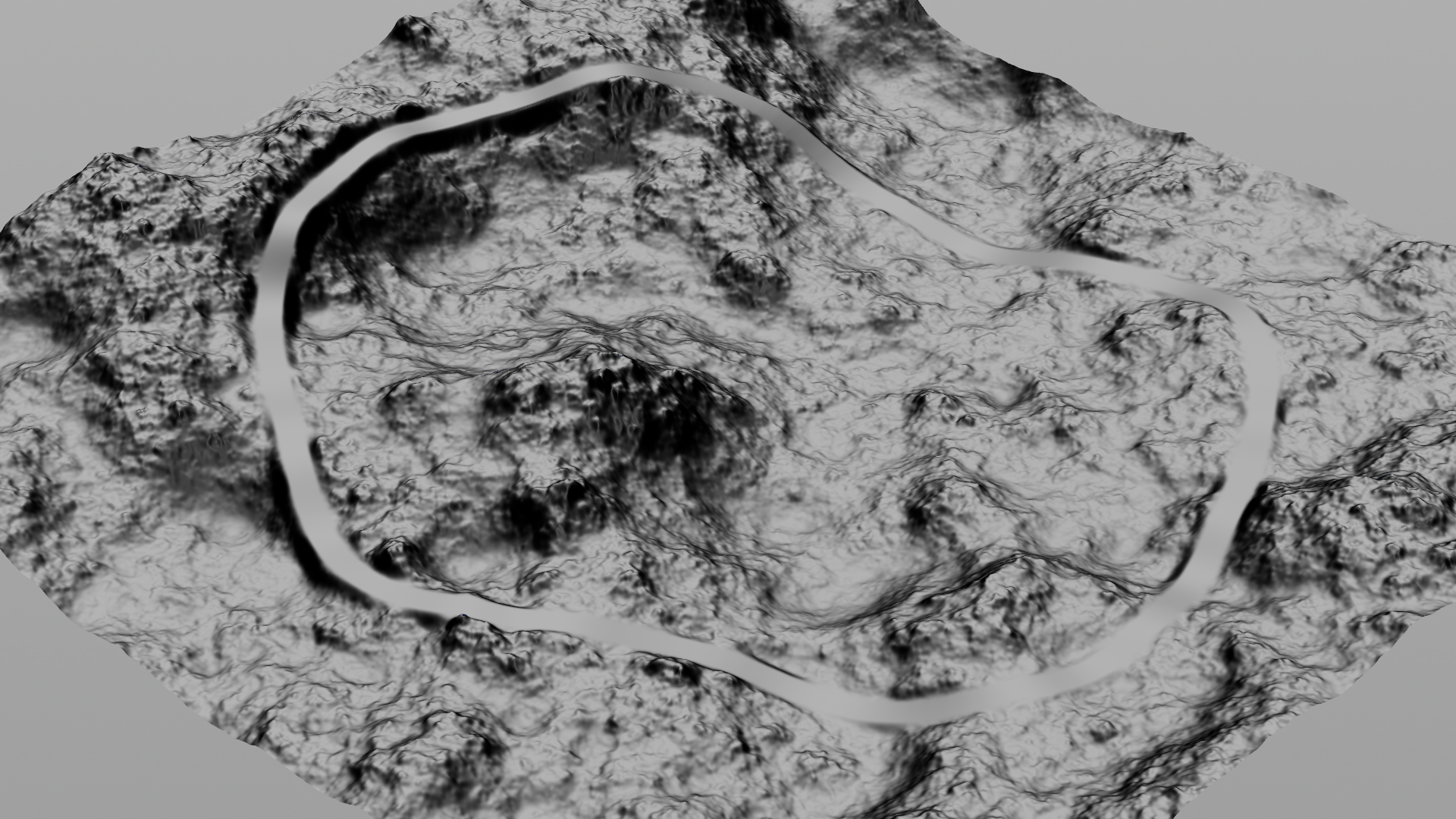

Blending a curve into a terrain to create a smooth road.
In this example we are going to blend a road into a terrain. Both the road and the terrain will mutually affect each other. First, the road curve will smoothly adapt to the height of the landscape, next, the landscape merges with the flow of the road. Thus we can ensure neither the landscape appears clipped nor the road turns out too bumpy.
A point wrangle samples height values from the heightfield to the road curve. To maintain a smooth drive, these values are blurred along the curve.
float lift = chf('lift');
f@height = volumesample(1, 'height', v@P) + lift;
Next, a volume wrangle is reapplying the blurred height information from the curve back to the heightfield, but only inside a smooth mask close to the road curve.
float width_min = chf('min_width');
float width_max = chf('max_width');
float ease = chf('roll_off');
int prim;
vector uvw;
float dist_crv = xyzdist(1, v@P, prim, uvw);
float height_crv = primuv(1, 'height', prim, uvw);
float mask = 1.0 - smooth(width_min, width_max, dist_crv, ease);
f@height = lerp(f@height, height_crv, mask);
f@mask = mask;
Further steps could include projecting a whole set of curves or a entire road network onto a landscape. Each curve may contain scale attributes to change the width, height and blend values of any given part of the road.